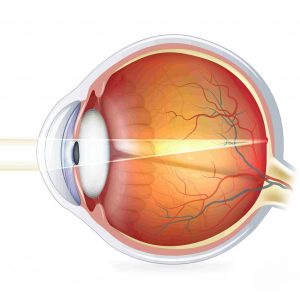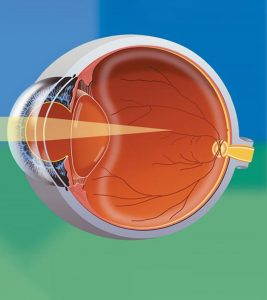Did you know that 70% of all information a person receives through sight? Did you know that there are many diseases in which vision deteriorates? Diabetes mellitus, hypertension, thyroid disease, strokes, vascular disease, kidney disease – all this can cause eye damage. No wonder they say that the eyes are the mirror of the soul.
Headache, fatigue, irritability, flashing “flies” in front of the eyes, iridescent circles when looking at light, light fog – these are the first signs of eye damage in such a severe pathology as glaucoma. Fog in front of your eyes, blurred vision, difficulties when working with documents and a computer – these are the first signs of cataract – clouding of the lens, the main optical lens of your eye.
There are many examples of eye damage. But only an ophthalmologist can diagnose and prescribe treatment on time.
We are compelled to state the sad fact – recently the number of people with visual impairment has been steadily growing. This is due to the fact that a predisposition to eye diseases is genetically transmitted. And with an increase in the load on the eyes from school onwards, when working with a computer, which has become a part of our life, diseases “get younger”, appear earlier and develop faster and harder.
Did you know that after the age of 40, everyone should have their intraocular pressure checked every 3 years? This is necessary for the early detection of glaucoma, a disease associated with increased intraocular pressure and leading to irreversible blindness without treatment. Patients with diagnosed glaucoma should be monitored by an ophthalmologist constantly and attend control examinations at least 3-4 times a year with compensated pressure and a favorable course of the disease. It is necessary to constantly instill drops in the eyes that lower eye pressure.
Glaukoma is called the “monkey” of eye diseases for a reason. It very often proceeds without obvious signs, asymptomatic, or disguises itself as any of the most unexpected eye diseases. Meanwhile, increased pressure leads to the death of the optic nerves and irreversible blindness. This can only be avoided by regularly checking with a doctor. Only a doctor – an ophthalmologist can correctly assess the state of your visual system, and in case of glaucoma, promptly refer you to surgical treatment in order to avoid blindness, or even loss of an eye.
In hypertensive disease, eye damage is associated to a greater extent with impaired blood flow in the vessels that feed the visual cells. As a result, vision suffers. Timely treatment and blood pressure normalization will help you maintain a clear gaze. “Untreated” vessels often lead to the formation of pathological foci of dystrophy, a kind of scars on the fundus. This is manifested by black spots in front of the eyes, “holes” in vision.
Diabetes https://en.wikipedia.org/wiki/Diabetes mellitus is another common cause of vision problems. The vessels become so fragile and brittle that very often we see hemorrhages, effusions, newly formed vessels. In the first stages of eye damage in diabetes mellitus, laser coagulation is very effective – cauterization of pathological foci and newly formed vessels.
In eye practice, there are many diseases in which, in order not to lose sight, regular courses of supportive therapy are needed. These are dystrophies of various origins and localizations, atrophy of the optic nerves after strokes, craniocerebral trauma, poisoning, high myopia with changes in the fundus and many others. Treatment may include physical therapy, acupuncture, injections into the muscles and eyes, intravenous and drip administration of drugs under the supervision and with the direct participation of an ophthalmologist. Supportive therapy courses carried out on time have a beneficial effect on the preservation of vision. But only a doctor can prescribe all this. Now remember, when was the last time you visited the optometrist?